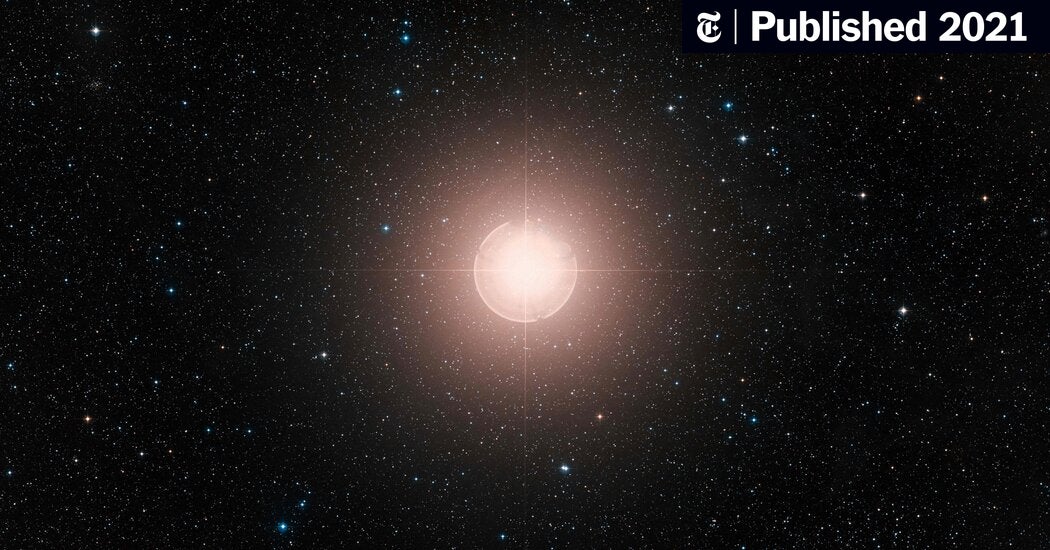Debra
Dagobah Resident
I managed to notice this on the scrolling news feed, on the 15th of June.
Just saw it once.
Perhaps this elusive something, that was observed back in 2012, had something to do with the Dark Star Companion of our Sun?

Original Source- National Geographic
"Stars may twinkle, but they don’t just vanish—so when a distant, giant star pulled a disappearing act for about 200 days, it took astronomers by surprise.
Now, roughly a decade later, astronomers have sifted through a variety of possible explanations—and they still have no idea what’s responsible for blotting out nearly all of the star’s light.
Described in a new study in the Monthly Notices of the Royal Astronomical Society, some of the theories still on the table rely on as-yet unobserved phenomena, such as a dark disk of material orbiting a nearby black hole, or undiscovered, dust-enshrouded companion stars. But over 17 years of observations, the star has only gone dark once, in 2012, making it more difficult for teams to nail down a plausible culprit.
It’s clear that whatever object eclipsed the distant star is huge—much bigger than the star itself. It also appeared to be completely opaque, blocking much of the starlight entirely, and it seemed to have a hard edge.
“The degree of drop in brightness is really impressive,” says Emily Levesque of the University of Washington, who studies massive stars and wasn’t involved in the observations. “It'll be cool to see more observations of this star, of whatever caused this, and to piece together how something like this happened.”
[...]
“It’s unusual for a star to dim in brightness by this much and for this long, and it immediately caught my eye as something unusual,” says study author Leigh Smith, an astronomer at the University of Cambridge.
Smith spotted the odd eclipse while he was sifting through data from the VISTA Variables in the Via Lactea, or VVV, survey. This project, which draws its name from the Latin for “milky way,” monitors the southern sky for variable stars in the galaxy’s disk.
The observation earned the star a special designation: WIT, or “What is this?,” an acronym that astronomers with the VVV project use to categorize curious objects. The star became known as VVV-WIT-08, and the team flagged it for follow-up work. Based on early observations, they estimated that the star was at least 25,000 light-years away in the direction of the galactic bulge, and that it was an eight-billion-year-old giant some 100 times larger than our sun, but smoldering at cooler temperatures.
During the first half of 2012, the star almost completely disappeared, losing 97 percent of its brightness. Data suggested that whatever had caused such a precipitous plunge was opaque, uniformly obscuring all visible and infrared wavelengths of light throughout the entire eclipse.
“That’s very hard to understand,” says Jason Wright of Pennsylvania State University, who wasn’t involved in the observations. “It’s something bigger than the star that’s completely opaque, and there aren’t many things that do that.”

 www.buytelescopes.com
www.buytelescopes.com
Just saw it once.
Perhaps this elusive something, that was observed back in 2012, had something to do with the Dark Star Companion of our Sun?

Original Source- National Geographic
"Stars may twinkle, but they don’t just vanish—so when a distant, giant star pulled a disappearing act for about 200 days, it took astronomers by surprise.
Now, roughly a decade later, astronomers have sifted through a variety of possible explanations—and they still have no idea what’s responsible for blotting out nearly all of the star’s light.
Described in a new study in the Monthly Notices of the Royal Astronomical Society, some of the theories still on the table rely on as-yet unobserved phenomena, such as a dark disk of material orbiting a nearby black hole, or undiscovered, dust-enshrouded companion stars. But over 17 years of observations, the star has only gone dark once, in 2012, making it more difficult for teams to nail down a plausible culprit.
It’s clear that whatever object eclipsed the distant star is huge—much bigger than the star itself. It also appeared to be completely opaque, blocking much of the starlight entirely, and it seemed to have a hard edge.
“The degree of drop in brightness is really impressive,” says Emily Levesque of the University of Washington, who studies massive stars and wasn’t involved in the observations. “It'll be cool to see more observations of this star, of whatever caused this, and to piece together how something like this happened.”
[...]
“It’s unusual for a star to dim in brightness by this much and for this long, and it immediately caught my eye as something unusual,” says study author Leigh Smith, an astronomer at the University of Cambridge.
Smith spotted the odd eclipse while he was sifting through data from the VISTA Variables in the Via Lactea, or VVV, survey. This project, which draws its name from the Latin for “milky way,” monitors the southern sky for variable stars in the galaxy’s disk.
The observation earned the star a special designation: WIT, or “What is this?,” an acronym that astronomers with the VVV project use to categorize curious objects. The star became known as VVV-WIT-08, and the team flagged it for follow-up work. Based on early observations, they estimated that the star was at least 25,000 light-years away in the direction of the galactic bulge, and that it was an eight-billion-year-old giant some 100 times larger than our sun, but smoldering at cooler temperatures.
During the first half of 2012, the star almost completely disappeared, losing 97 percent of its brightness. Data suggested that whatever had caused such a precipitous plunge was opaque, uniformly obscuring all visible and infrared wavelengths of light throughout the entire eclipse.
“That’s very hard to understand,” says Jason Wright of Pennsylvania State University, who wasn’t involved in the observations. “It’s something bigger than the star that’s completely opaque, and there aren’t many things that do that.”

Mystery object blotted out a giant star for 200 days
Mystery object blotted out a giant star for 200 days Stars may twinkle, but they don’t just vanish—so when a distant, giant star pulled a disappearing act for about 200 days, it took astronomers by surprise. Now, roughly a d



 *eeeeep*
*eeeeep*